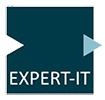Best project management practices with Agile
This training course offers a theoretical and practical presentation of the IT project management profession. Agility is essential, and responds to today's business needs for adaptability and responsiveness, characteristics that extend right down to the innermost level of the IT system.
Targets
The aim of this training course is to enable the IT department to respond to certain constraints and even turn this into a strength.The experience of the IT community is thus concentrated in a collection of best practices in software development. This training course will give you some of this knowledge.
Prerequisite
For this training course, notions of team management and IT project management as well as experience would be desirable.
Detailed content
- Agile transition
- Cases of leaders
- Cases of Product Owners
- Cases of software architects
- Cases of development teams
- Cases of team managers
- Client cases
- Contractualization of deliverables
- What you need to know to understand the sequence
- The agile manifesto
- Agile methodologies
- Scrum
- Kanban
- eXtreme Programming
- Difference between Scrum, Kanban and XP
- Lean Startup
- What methodology to choose?
- The sprint (or iteration)
- Backlogs
- The User Stories
- The Technical Stories
- Boards
- Scrum Board
- Kanban Board
- Other boards
- Le Burndown Chart
- Sprints
- Define development processes
- Example of a complete process in an agile methodology
- Passage from one step to another : the Definition of Done
- Role of software architects
- Role of the technical project manager
- Project documentation
- Technical debt management
- Duration of a sprint
- Methods used
- Communicate
- Team size
- Developer situation
- Working in pairs
- Coding rules
- Domain-Driven Design
- Test-Driven Development
- Behavior-Driven Development
- Code Reviews
- Regular demonstrations at Product Owner
- Product packaging
- Continuous improvement
- Continuous integration
- Trigger feedback to get the most out of it
- 20% of "Free Time"
- Agile meetings
- Backlog Refinement Meeting
- Sprint Planning Meeting
- Daily Scrum Meeting
- Sprint review
- Retrospective of sprint
- Retrospective of anomalies (or Post-Mortem)
- R&D Presentations
- Big Code Review
- One on One Meeting
- Manage your agile project
- Manage your team
- Teams and corporate culture
- Manage your product backlog
- Manage your architecture backlog
- Minimum Viable Product
- Manage quality and anomalies
- Estimer
- Unit of estimate
- User Stories Perimeter
- Tasking
- Plan
- Agile metrics
- Towards self-management
- Agile project management tool
- Tableur
- Trello
- Post-its table
- ALM tools
- User Story Map
- iceScrum

